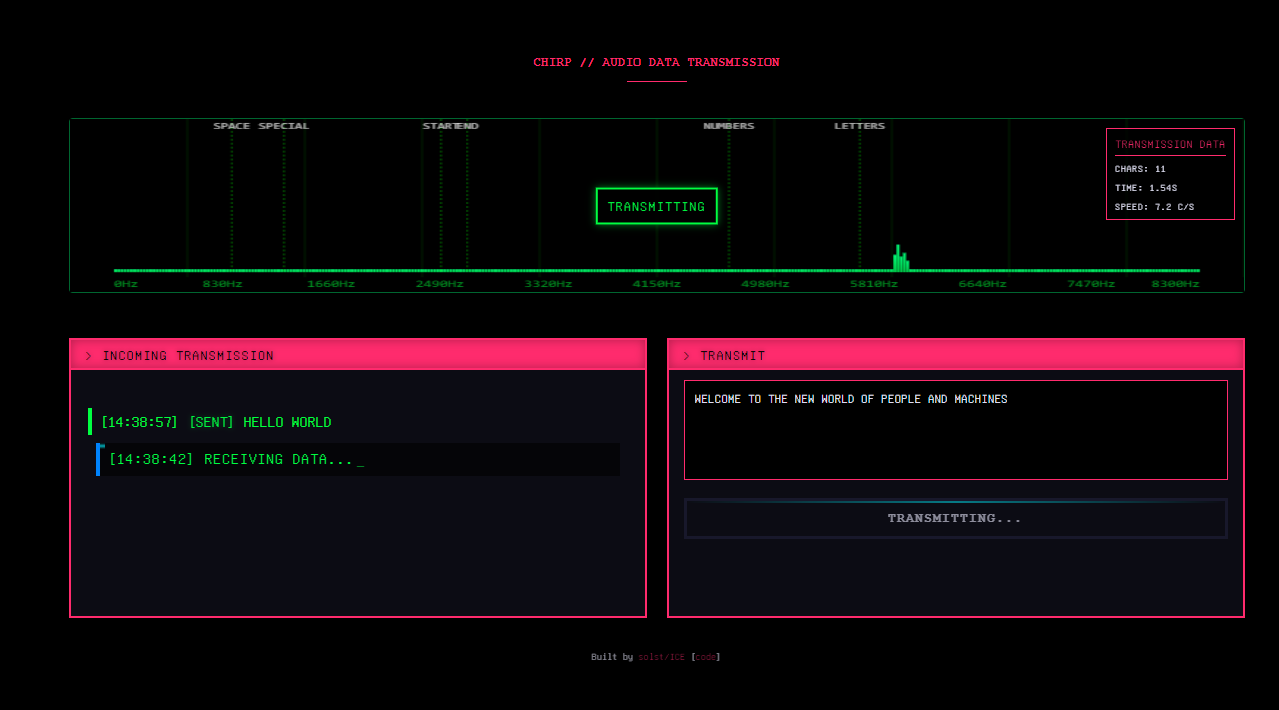Chirp: Transmitting Data Through Sound
In the ever-evolving world of data transfer, a project called Chirp caught my attention on GitHub. Developed by solst-ice, Chirp enables users to send and receive data using sound waves, transforming text into audio frequencies that can be transmitted through speakers and captured by a microphone. You can try it out yourself on their demo website, where granting microphone access unlocks a unique data transfer experience.

What is Chirp?
Chirp is an innovative application that leverages audio to encode and transmit text data. By mapping characters to specific audio frequencies, it creates a seamless way to send messages through sound and decode them back into text. This proof-of-concept project showcases the potential of sound-based communication in a creative and accessible way.
Key Features
- Real-time frequency visualization to watch the audio spectrum as data is transmitted and received.
- Text-to-sound encoding to convert text messages into unique audio frequencies for transmission.
- Sound-to-text decoding to capture audio input and decode it back into readable text.
- Start and end signatures to ensure accurate detection of message boundaries.
How Chirp Works
Chirp operates through a straightforward process: encoding each character into a specific audio frequency, transmitting with start and end signatures, receiving and decoding the frequencies back into text, and providing a real-time frequency spectrum display for visualization.
Getting Started with Chirp
You can access the application directly on the demo site or explore the project further via the GitHub repository.
Using Chirp
Start by visiting the demo site, grant microphone access, enter a message, and transmit it as sound. Received messages will appear if your setup is correctly configured.
Tips for Best Results
- Use a quiet environment to minimize interference.
- Adjust your microphone and speaker settings for optimal performance.
- Grant microphone access when prompted by your browser.
Technologies Behind Chirp
Chirp is built with a modern tech stack including React, TypeScript, Vite, and the Web Audio API, making it both robust and developer-friendly.
Why Chirp is Exciting
Chirp is more than just a novelty—it’s a creative exploration of alternative data transmission methods. While a proof of concept with a simplified encoding scheme, it opens possibilities for low-bandwidth environments or creative installations, and its visualization serves as an educational tool for understanding audio frequencies and data encoding.
For a 5 month project it also happens to almost 600 stars on GitHub and one particular developer caught my eye👀.

Try It Out!
Curious to see Chirp in action? Visit the demo site to test it directly in your browser, or check out the GitHub repository to learn more. Whether you’re a developer or a tech enthusiast, Chirp offers a fun and insightful look into sound-based communication.

